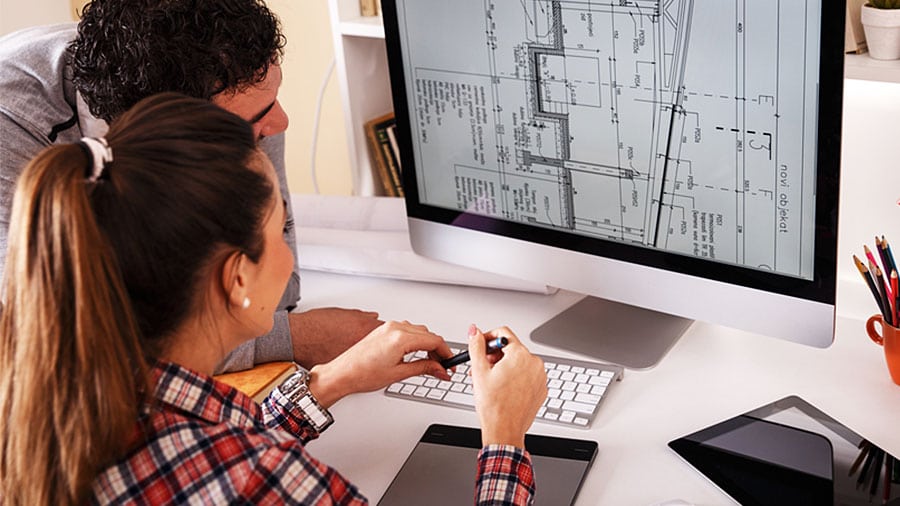If you’re considering a career in computer-aided design (CAD), you’re likely interested in creating the designs that structures and cities are made of. CAD technicians do the important work of producing detailed, interactive drawings of everything from commercial products to car parts, buildings, bridges, and beyond.
How do these professionals help bring creative visions to life? What is it like to put conceptual CAD knowledge into practical use on a daily basis? How do they apply their CAD skills to architectural and engineering projects in their communities?
Because CAD work is creative in nature, the answers to these questions vary widely! Read on for a clearer picture of what a typical Engineering CAD technician does, and what you can expect from a day on the job as a CAD technician.
An Early Start: Grads of CAD Design Courses Greet their Teams & Get to Work
If you graduate from a CAD technician program, you can expect to work in one of a range of design offices. These include architectural offices, engineering firms, CAD-specific workgroups, construction companies, engineering consultancies, and even various government departments, all of which typically hold office hours from approximately 9 a.m. to 5 p.m., Monday to Friday. Your average CAD technician will start their day by rising bright and early and heading to one of these design offices in their community.
Once in their office, the average CAD technician will be greeted by their coworkers: peers in the design field like engineers, architects, and technologists. CAD work is collaborative, so these offices are hubs of communication between team members with different kinds of expertise. Each person is generally tasked with working on a different part of the design project.
A graduate of an engineering CAD technician program brings their design expertise to the table, assisting the architects, engineers, or technologists they work alongside. They take instructions from project managers, boot up their computers/CAD workstations, and dig in.

CAD technicians put their heads together to fine-tune a 2D design
Using Skills from CAD Design Courses to Model Design Projects
Throughout their workdays, CAD technicians use state-of-the-art design software like AutoCAD and Autodesk Inventor to create and fine-tune sleek designs and digital prototypes. This can involve everything from a 3D mechanical design to a topographical drawing to a product simulation and beyond. Technicians need the right training and a close attention to detail to perform this exciting work.
From their CAD workstations, technicians focus their attention on the various design projects at hand, using layout and dimensioning techniques to create clear and accurate designs that can often be viewed from multiple different perspectives. They also pay careful attention to whether the structural elements they design adhere to the industry’s technical drafting standards—all of which you can learn about in CAD courses.
Keeping Up Communications with Clients, Construction Teams, and More
Individuals with engineering CAD careers are responsible for producing and communicating detailed design data to the industry professionals who need it most. This includes both clients (who want to see clear visual representations of how their final products will turn out) and engineering/architectural construction teams (who use CAD documents as guides when building and purchasing building materials).
An ongoing aspect of a CAD technician’s job is to address requests and concerns from these professionals, often communicated to them via their managing engineers, architects, or technologists. For example, if a client changes their mind about the size and placement of an entranceway, they may tell a project manager, who then asks a CAD technician to make the appropriate changes.
CAD technicians are responsible for taking the information given to them and adjusting their designs to reflect the latest requests—meaning that many of their projects come together over months of hard work and adjustments. CAD technicians use their skills to create digital prototypes that aim to please throughout the design process. This way, even when projects are a work-in-progress, CAD technicians can end their days proud of a job well done.
Are you ready to begin your career with CAD design courses?
Visit Digital School to learn more about getting started.

